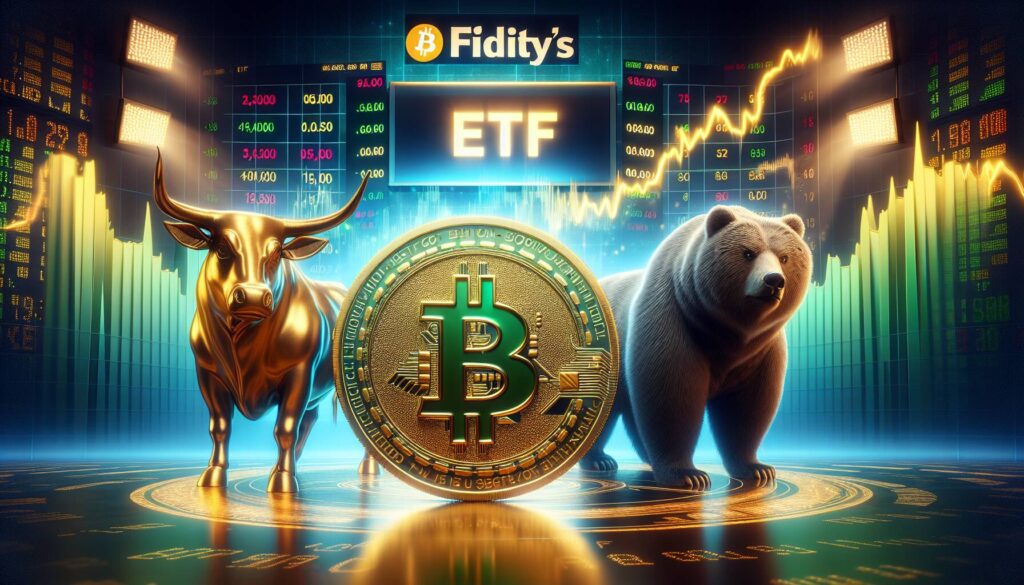Bitcoin’s recent lull has cast shadows over the broader cryptocurrency market, intertwining the fate of altcoins with its performance. As market consolidation continues, many alternative cryptocurrencies, once seen as poised for a resurgence, have faltered. Within just a day, prominent altcoins such as XRP and SOL have recorded significant drops, leading to a collective downturn of over 4% in the crypto market’s total valuation.
“Forty-eight of the top 100 altcoins are losing double-digit rates over 24 hours, while only three are growing,” noted Alex Kuptsikevich, chief market analyst at FxPro.
Compounding these challenges is an unusual $2 billion worth of ether awaiting unstaked status. With over 475 Ethereum validators on standby, some analysts are drawing comparisons to similar occurrences from earlier in the year, which marked temporary price tops. The recent shifts appear to be fueled by rising borrowing costs on platforms like Aave, causing traders to reassess their strategies.
Tether is also making waves by preparing to return to the U.S. with stablecoin offerings aimed at enhancing payment systems. Meanwhile, traditional markets reflect a flattened state against the U.S. dollar, as traders remain watchful for indicators of long-term stability amidst the shifting dynamics in both crypto and fiat landscapes.
As developments unfold, the crypto community may feel the ripples of these changes, impacting not only asset values but broader market sentiment.

Recent Developments in the Cryptocurrency Market
Key Insights and Implications for Readers:
- Bitcoin Consolidation: Bitcoin’s lack of growth is impacting alternative cryptocurrencies (altcoins), leading to significant declines across the market.
- Altcoin Performance: Major altcoins like XRP and SOL have dropped noticeably, with a large portion of the top 100 experiencing double-digit losses, suggesting a possible shift in investor confidence.
- Market Cap Decrease: The crypto market has lost nearly 4% of its market cap, indicating a bearish trend that could affect investor sentiments and strategies.
- Staking and Unstaking Dynamics: A substantial amount of ether is waiting to be unstaked, potentially leading to volatility in ether’s price, drawing parallels to previous market behaviors.
- Borrowing Rates Surge: Increasing ether borrowing rates are affecting staking yields, leading to a reconsideration of investment strategies, particularly for leveraged positions. This might influence the readers’ approach to crypto investments.
- Tether’s U.S. Re-entry Plans: Tether intends to launch stablecoin offerings in the U.S., which could signal new opportunities in the payments and trading sectors.
- Upcoming Economic Indicators: Key economic events, like the European Central Bank’s interest rate decision and U.S. durable goods orders data, might impact both crypto and traditional markets significantly.
- Token Events and Launches: The landscape is evolving with new tokens and governance proposals that could affect reader investments and market participation.
- Correlation with Traditional Markets: The growing connection between Bitcoin’s volatility and traditional financial indicators like the S&P 500 VIX may shape the strategy for investors looking at both markets. Recognizing these patterns can be crucial for informed decision-making.
Crypto Market Trends: A Comparative Analysis
The current state of the cryptocurrency market reveals a notable divergence between Bitcoin’s stability and the turmoil affecting dominant altcoins. As Bitcoin (BTC) continues its consolidation phase, the broader altcoin market, particularly payment-centric cryptocurrencies like XRP and SOL, has suffered significant declines, showcasing a simultaneous vulnerability and dependence on Bitcoin’s performance. For traders and investors heavily invested in altcoins, this creates a precarious situation as their assets exhibit heightened sensitivity to Bitcoin’s fluctuations.
Competitive Advantages and Disadvantages: Among altcoins, the recent decline offers a competitive edge to Bitcoin as it stands out as a relatively stable haven during this downtrend. Bitcoin’s dominance, now at 62.1%, signals its role as a market leader that can instill confidence among investors, while other cryptocurrencies struggle to gain traction. Yet, the sharp decrease in altcoin values highlights a potential disadvantage for their advocates; those who have placed long-term bets on altcoins may find their positions severely threatened. Furthermore, the growing borrowing rates for Ethereum on platforms like Aave complicate matters, forcing many to unwind their leveraged positions and driving the price down even further.
This volatile environment could prove beneficial for speculative traders who thrive amidst market dislocations, allowing them to seize undervalued opportunities in the altcoin space. However, it poses risks for long-term investors and holders who may be forced to make difficult decisions regarding their positions, especially as the market sentiment leans toward caution. With a significant backlog of Ethereum awaiting unstaking, concerned stakeholders might face liquidity challenges, impacting their investment strategies.
Market Sentiment: As news of Tether’s potential re-entry into the U.S. market with stablecoin offerings surfaces, it may provide some support for the overall crypto ecosystem. However, if altcoins continue their descent without any corrective measures, this newfound stability might only trickle down to Bitcoin, leaving investors in smaller cryptocurrencies in a quagmire. The parallel drawn between current events and past market behavior, where large unstaking precipitated a temporary price peak, suggests that historical patterns frequently influence future outcomes, thus complicating the decision-making process for those involved.
In summary, while the rise of Bitcoin may bolster sentiment in some quarters, it’s essential to remain vigilant; the continuous unwind of leveraged positions across various altcoins could lead to deeper market restructuring. Therefore, both investors and traders must navigate this turbulent landscape with care, focusing on developing strategies that align with their risk tolerance and long-term objectives.

















